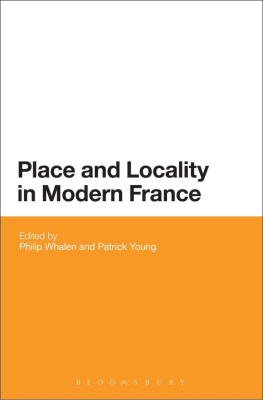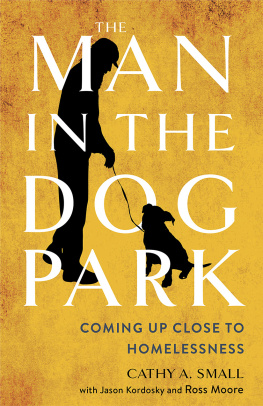
Routledge Revivals
A Geography of the Lifeworld
Within the modern Western lifestyle increasing conflict is becoming apparent between that patchwork of isolated points such as the home or the office, which are linked by a mechanical system of transportation and communication devices, and a growing sense of homelessness and isolation.
This work, first published in 1979, adopts a phenomenological perspective illustrating that this malaise may have partial roots in the deepening rupture between people and place. Whereas the problems of terrestrial space may have been overcome technologically and economically, it has been less successful regarding people. Experience indicates that people become bound to locality, and the quality of their life is thus reduced if these bonds are disrupted or broken in any way. The relationship between community and place is investigated, as is the opportunity for improving the environment, both from a human and an ecological perspective.
This book will be of interest to students of human geography.
A Geography of the Lifeworld
Movement, Rest and Encounter
David Seamon
First published in 1979
by Croom Helm Ltd
This edition first published in 2015 by Routledge
2 Park Square, Milton Park, Abingdon, Oxon, OX14 4RN
and by Routledge
711 Third Avenue, New York, NY 10017
Routledge is an imprint of the Taylor & Francis Group, an informa business
1979 David Seamon
The right of David Seamon to be identified as author of this work has been asserted by him in accordance with sections 77 and 78 of the Copyright, Designs and Patents Act 1988.
All rights reserved. No part of this book may be reprinted or reproduced or utilised in any form or by any electronic, mechanical, or other means, now known or hereafter invented, including photocopying and recording, or in any information storage or retrieval system, without permission in writing from the publishers.
Publishers Note
The publisher has gone to great lengths to ensure the quality of this reprint but points out that some imperfections in the original copies may be apparent.
Disclaimer
The publisher has made every effort to trace copyright holders and welcomes correspondence from those they have been unable to contact.
A Library of Congress record exists under LC control number: 79000481
ISBN 13: 978-1-138-88506-6 (hbk)
ISBN 13: 978-1-315-71569-8 (ebk)
A GEOGRAPHY OF THE LIFEWORLD
MOVEMENT, REST AND ENCOUNTER
DAVID SEAMON
1979 David Seamon
Croom Helm Ltd, 2-10 St Johns Road, London SW11
ISBN 0-85664-845-0
British Library Cataloguing in Publication Data
Seamon, David
A geography of the lifeworld,
1. Environmental psychology
I. Title
301.31 BF353
ISBN 0-85664-845-0
Printed in Great Britain by offset lithography by
Billing & Sons Ltd, Guildford, London and Worcester
CONTENTS
List of Tables and Figures
Tables
Figures
Dedicated to
Clark University, its students,
staff, and faculty,
especially in the years 1970-7
What is the obvious? It is that which is taken for granted and never spoken of as such; yet, the obvious everywhere and always guides and supports our culture. The obvious is that with which we already agree the base from which all action, individual and social, proceeds. Since it is never explicitly discussed nor articulated, the obvious is the most difficult to identify, even though in a disguised manner it lies all around us. To uncover the obvious we must take a step back from the assumptions and attitudes that entwine us Grange (1977, p. 136).
PREFACE
This book is an exercise in looking and seeing. It hopes to help the reader become more sensitive to his or her experiences with places and environments. Stopping to talk on the way to the corner store with a neighbour repairing his pavement, feeling sad that a local bakery has closed, adjusting to the fact that the street on which one lives has just been made one-way, getting lost in a new place, driving long into the night in order to reach home and sleep in ones own bed situations like these are the groundstones of this book. I ask if such experiences point to wider patterns of meaning in regard to peoples relationship with place and environment. Do such experiences, for example, say something about feeling responsible and caring for a place? About the essential nature of spatial behaviour? About the relationship between community and place? About improving places so that they might become more liveable environments, both humanly and ecologically?
The central message of this book is that a satisfying human existence involves links with the locality in which one chooses to live. A sense of personal satisfaction as well as a sense of community are both inescapably grounded in place. Much of social science in the last several decades seems to suppose that people are now easily able to transcend physical space and environment because of advances in technology and science. Indeed, the predominant Western life-style today involves a patchwork of isolated points home, office, places of entertainment, recreation, etc. all linked by a mechanical net of transportation and communication devices. At the same time, however, great thinkers as well as people on the street speak with varying degrees of articulateness about a growing sense of homelessness and alienation. They speak of peoples increased disrespect for places and the natural environment.
A phenomenological perspective indicates that this deepening malaise may have partial roots in the growing rupture between people and place. The so-called conquest of terrestrial space may have been successful technologically and economically, but not humanly. At least experientially, it seems that people become bound to locality. The quality of their life becomes reduced when these bonds are broken in various ways.
Understanding the person-place bond has threefold value. First, it fosters in the reader a growing interest in the essential nature of his or her own day-to-day dealings with environments and places in which he or she lives and moves. Second, such understanding provides a tool whereby environmental designers and policy-makers might discover a new perspective and approach for tackling projects and plans for specific places and environments. Third, this understanding might serve as a framework around which concerned people living in a specific place can ask questions in regard to how they themselves might make that place a more satisfying human and ecological environment.
The ideas in this book are in only small part mine. I have been helped by the thoughts of many, including Yi-Fu Tuan, Anne Buttimer, Martin Heidegger, Maurice Merleau-Ponty, J.G. Bennett, and the excellent phenomenological work done by researchers in the Department of Psychology at Duquesne University. Im especially indebted to Edward Relph and his perceptive phenomenological study











